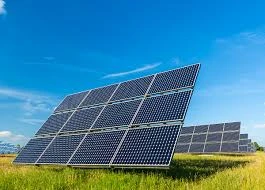multi string solar inverter
Multi-string Solar Inverters A Comprehensive Overview
In recent years, the demand for renewable energy solutions has skyrocketed, leading to significant advancements in solar technology. Among these advancements, multi-string solar inverters have emerged as a vital component in optimizing the efficiency and performance of solar power systems. This article delves into the workings, benefits, and applications of multi-string solar inverters.
A solar inverter plays a crucial role in converting the direct current (DC) generated by solar panels into alternating current (AC), which can be used by household appliances or fed back into the grid. Unlike traditional single-string inverters, multi-string inverters are designed to handle multiple string inputs of solar panels. Each string operates independently, allowing the system to maximize energy harvest from each section of solar modules.
How Does a Multi-string Inverter Work?
In a multi-string solar inverter setup, each string of solar panels is connected to a separate input. This arrangement allows for independent optimization of each string based on factors such as shading, orientation, or panel degradation. For instance, if one string is partially shaded while the others receive full sunlight, the inverter can optimize the performance of the unshaded strings without being affected by the underperforming one. This capability is achieved through advanced maximum power point tracking (MPPT) technology, which ensures each string operates at its optimal voltage and current, thus maximizing the overall energy output.
Benefits of Multi-string Solar Inverters
1. Enhanced Energy Harvesting The primary advantage of multi-string inverters is their ability to significantly increase energy production. By optimizing each string separately, these inverters can mitigate losses caused by shading or different orientations of solar panels. This leads to more effective utilization of available sunlight.
multi string solar inverter

2. Improved System Monitoring Multi-string inverters often come equipped with sophisticated monitoring systems that provide real-time data on the performance of individual strings. This feature allows for quick identification of issues, enabling proactive maintenance and troubleshooting, which can further enhance the longevity and efficiency of the solar power system.
3. Flexibility in Design With the ability to connect multiple strings, multi-string inverters offer greater flexibility in system design. This is particularly beneficial for commercial applications where varying panel arrangements may be needed due to space constraints, shading from nearby structures, or distinct energy demands.
4. Redundancy and Reliability In systems equipped with multi-string inverters, the failure of one string does not affect the operation of others. This redundancy can significantly enhance the overall reliability of the solar power installation, making it a preferred choice for critical applications.
Applications of Multi-string Solar Inverters
Multi-string solar inverters are ideally suited for a wide range of applications, from residential rooftops to large-scale commercial solar farms. They are particularly beneficial in settings where shading from trees or buildings can impact the performance of certain panels. Additionally, they are advantageous in installations where solar panels are installed on multiple roof orientations, allowing each array to perform optimally regardless of its position relative to the sun.
Conclusion
In conclusion, multi-string solar inverters represent a significant advancement in solar technology, providing enhanced efficiency, flexibility, and reliability. By allowing for independent management of multiple strings of solar panels, these inverters facilitate greater energy production and better system performance. As the world continues to shift towards renewable energy sources, the adoption of multi-string solar inverters will likely play an integral role in maximizing the benefits of solar energy systems, paving the way for a sustainable energy future.
-
Unlocking Energy Freedom with the Off Grid Solar InverterNewsJun.06,2025
-
Unlock More Solar Power with a High-Efficiency Bifacial Solar PanelNewsJun.06,2025
-
Power Your Future with High-Efficiency Monocrystalline Solar PanelsNewsJun.06,2025
-
Next-Gen Solar Power Starts with Micro Solar InvertersNewsJun.06,2025
-
Harnessing Peak Efficiency with the On Grid Solar InverterNewsJun.06,2025
-
Discover Unmatched Efficiency with the Latest String Solar InverterNewsJun.06,2025







